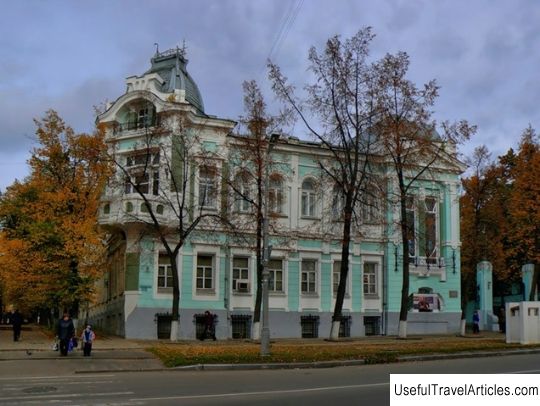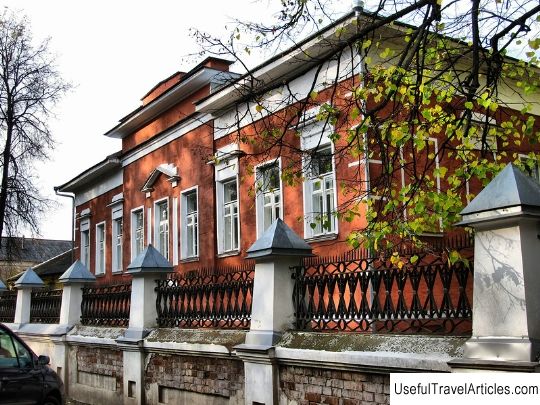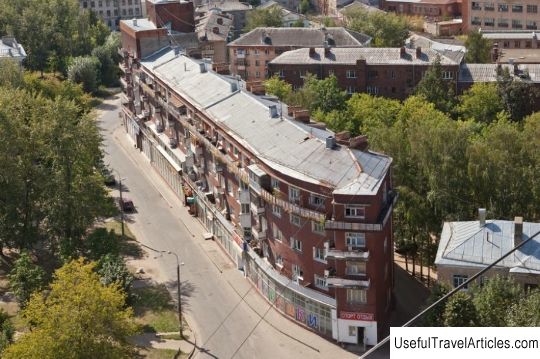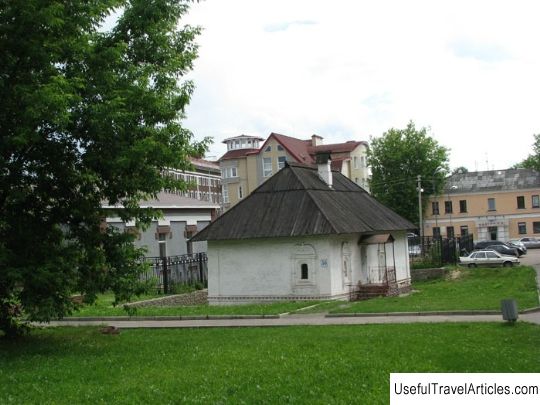Elias Church description and photos - Russia - Golden Ring: Ivanovo
Rating: 8,4/10 (565 votes) 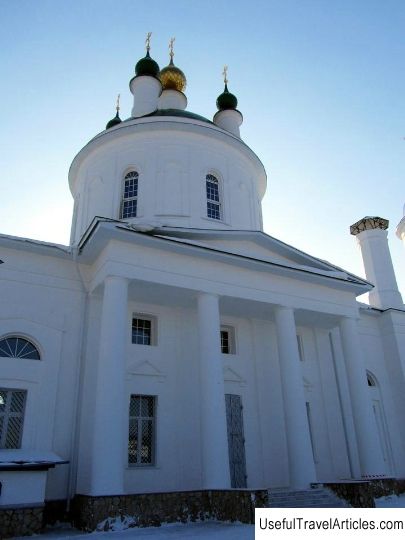
Elias Church description and photos - Russia - Golden Ring: Ivanovo. Detailed information about the attraction. Description, photos and a map showing the nearest significant objects. Photo and descriptionIn the city of Ivanovo, on Koltsova street, 19A, there is an old church consecrated in honor of Elijah the Prophet. The historical development of the Church of St. Elijah is closely related to the history of the city of Ivanovo itself. At one time, not far from the village of the same name, the formation and subsequent formation of the Ilyinsky settlement began. It is known that at the end of the 17th century, the textile industry began to actively develop, after which, at the beginning of the 18th century, enterprising and active people separated from the Ivanovo peasants, who were able to organize large linen manufactories on the basis of linen weaving. Approximately at the same time, the introduction of the manufacture of heels or patterns on linen fabrics began - this type of production became the most successful in the village. After 1812, which turned into a complete ruin of the Moscow industry, the serf village of Ivanovo became the epicenter of printed production. Prosperous peasants bought the settlement from the rich Count Sheremetev, while losing ownership in the village. After that, they decided to acquire land plots from the surrounding landowners. Thus, settlements began to form along the perimeter of the village, after which the city of Ivanovo-Voznesensk was gradually formed, which developed from several centers. The very first appeared Vorobyevskaya or Ilyinskaya Sloboda. Beginning in 1816, the wealthy merchant A.A. Lepetov, who was a trader in paper yarn and calico, began to buy up land from the landowner E.I. Barsukova - the owner of the village of Vorobyevo. A few years later, the merchant built a house. Over time, calico factories began to form here, owned by the merchants D.I. Spiridonov and A.V. Baburin, as well as spacious warehouses for the yarn of the merchants Kiselev. It is known that the foundation of the Elias Church took place in 1838, after which in 1842, when all construction work was completed, it was consecrated. The temple was built at the expense of A.A. Lepetova. The Church of Elijah the Prophet has become a real monument of classicism, while its southern and northern facades are decorated with four-column porticoes. The main volume of the temple consists of a crowning cylinder and a cube base, which ends with five domes. From the west, a small bell tower adjoins the temple, which has a cylindrical shape in the upper tier. In 1893, A.I. Garelin - Lepetov's grandson - according to the project of the talented architect from Moscow A.S. Kaminsky, a planned internal reconstruction of the church took place, namely, the winter and summer halves separated by a wall were connected into a single integral room. Until today, new carved iconostases have been installed in the existing side-altars of the Forty Martyrs of Sebastia and the Nativity of the Virgin. On the walls of the temple there is a unique painting made by the famous artist from Palekh - Belousov. Ilyinskaya Sloboda was founded by people who for a long time were famous for their merciful deeds and charity. Garelin Maria Alexandrovna, who was the wife of Garelin Alexander Ivanovich, was engaged in charitable affairs. In production, under the guidance of her husband, a special social sphere was formed, which covered the entire life period of a person, from his birth to his death. During the Russo-Japanese War, Garelin's wife headed the Ivanovo-Voznesenskoe charity society, when almshouses for the elderly, a nursery for children and a spacious dining room were organized for numerous city residents. Between 1842 and 1852 for years, the priest in the temple of Elijah the Prophet was Pokrovsky Alexy Yegorovich. From 1852 to 1904, the rector of the church was the son-in-law of the priest of Pokrovsky Alexy, Archpriest Leporsky Grigory Afanasyevich. After him, until 1918, his son Nicholas was appointed rector. In 1935, the temple was closed, after which the services were resumed only in 1989, when the first Divine Liturgy was held. The temple altar was consecrated in the name of John of Kronstadt. The church acquired its present splendid appearance in 1993, thanks to the support of benefactors, the active participation of parishioners, the ascetic work of the rector and clergy.               We also recommend reading Church of St. Margaret (St. Margaret Church) description and photos - Great Britain: London Topic: Elias Church description and photos - Russia - Golden Ring: Ivanovo. |
